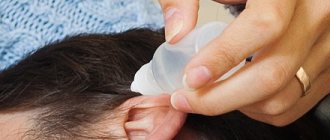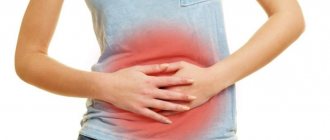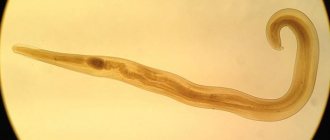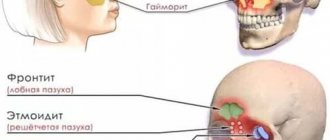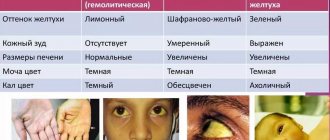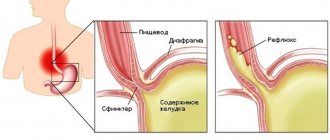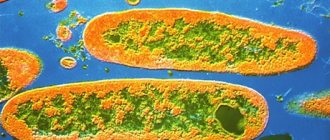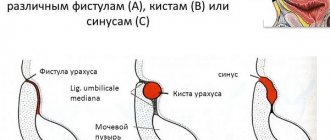The text is presented for informational purposes only. We strongly urge you not to self-medicate. When the first symptoms appear, consult a doctor. We recommend reading: “Why you can’t self-medicate?”
Treatment of mumps includes preventing the development of complications, as well as alleviating the symptoms of the disease. Mumps can be epidemic, that is, infectious, or non-epidemic, specific and nonspecific, it can occur in different forms, with or without complications, in acute or chronic form. Non-infectious mumps has nothing to do with a viral disease. Occurs in case of injury or prolonged hypothermia with subsequent inflammation of the parotid salivary glands.
Viral mumps has no specific treatment, since to date no drug has yet been created against the virus that causes mumps.
The treatment process for mumps can be carried out at home or in a hospital setting with hospitalization of the patient. The decision on the place and extent of treatment, of course, should be made only by the attending physician.
Interesting facts about mumps
The disease got its name “mumps” or “mumps” because with mumps, severe swelling occurs in the neck and behind the ears. The patient's appearance resembles a piglet. The disease has been known since ancient times; Hippocrates gave its first descriptions, but then no one knew what caused the disease.
Progress in the diagnosis and treatment of mumps began during epidemics of the 17th and 19th centuries among regular army soldiers. Due to the high population density of the barracks, due to poor hygiene, the soldiers fell ill with mumps one after another. Sometimes at that time this disease began to be called “trench or soldier’s disease.” It was only in the last century that the nature of the infection was discovered by isolating the virus and infecting laboratory animals (monkeys) with it. By 1945, the first vaccine against mumps was developed, which gave rise to the era of mass vaccination against it.
Although attempts have been made to infect animals with the virus in laboratories, in the natural environment mumps is a typically human disease. Therefore, you cannot become infected with it through contact with wild or domestic animals. Only people can transmit it to each other. Before vaccination, mumps posed a serious danger in terms of the spread of epidemics. Today, there are isolated cases of mumps among those children whose parents do not vaccinate them, and adults whose vaccine immunity has faded and have not received repeated vaccinations also often get sick.
Prevention
To prevent infection of other children or adults, the patient is isolated for 10 days.
Prevention of mumps, first of all, involves vaccination. To do this, I use a live or attenuated vaccine, which is injected under the skin in the area of the shoulder blade or the outer part of the shoulder once using a dose of 0.5 ml.
Vaccination is given to children aged 1 year. The vaccine includes antibodies against measles and rubella.
At 6 years of age, revaccination is carried out, after which stable immunity to the disease is developed and infection is excluded almost 100%.
If, for medical reasons or because of refusal to vaccinate, the vaccination schedule has been disrupted, then you can get vaccinated at any age, and revaccination at least after 4 years.
Several types of vaccines are used for vaccinations:
- Monovaccine is a vaccine against mumps in live form.
- Vaccine – against measles and mumps in live form.
- The three-component vaccine includes Priorix, Ervevax, and Trimovax.
How does infection occur?
The mumps virus belongs to the RNA viruses of a special group, rubulavirus; it is not very persistent in the external environment. You can become infected with it only through prolonged and close contact with sick people. At the same time, people who are sources of infection may not yet suspect that they have mumps.
- By airborne droplets - the virus is released with saliva and mucus of the nasopharynx, and if the patient spoke to you, coughed, blew his nose or sneezed near you, kissed you, was in the same room with you - the risk of infection is very high
- By contact - it will also be dangerous for children to use shared toys, licking fingers, objects touched by the hands of an infected baby, which he previously pulled into his mouth.
The disease is characterized by seasonality - the peak incidence occurs in the spring, and in August-September the disease is practically not registered. The disease is widespread and widespread, but due to the fact that children are now being actively vaccinated, epidemics currently occur infrequently.
According to numerous studies, it has been established that people become infectious:
- a week before inflammation of the salivary glands
- 7-17 days may pass from the moment of infection
- They remain infectious for approximately 8-9 days after the first manifestations of the disease.
Patients especially produce a lot of viruses and they are most contagious when the salivary glands are inflamed. During this time, they must be strictly isolated from others to prevent the spread of infection.
The incubation period (from the moment of infection with the virus until the manifestation of the disease) is:
- in children on average from 12 to 22 days.
- in adults it ranges from 11 to 23-25 days, usually 14-18 days.
Who can get mumps?
Anyone who does not have immunity to it (has not been sick before or has not been vaccinated) can get mumps; due to weakened immunity, children are more likely to get sick. Among adults, those who do not have antibodies to mumps in their blood suffer - this is no more than 10-20% of the population (the rest have antibodies to the infection in their blood). It has been noted that boys and men suffer from partitis twice as often and more severely.
Can vaccinated people get mumps? Correctly administered MMR vaccination protects almost everyone (98%) from mumps infection; only a small number of people vaccinated with one or even two doses of the vaccine can develop mumps symptoms. But the course of mumps in such people is mostly mild and uncomplicated.
Causes
The main cause of mumps infection is paramyxoviruses (Paramyxoviridae - a family of viruses from the order Mononegavirales).
You can become infected from a child who has not yet developed any signs or symptoms of the disease. During an epidemic, 70% of children are infected.
After suffering from mumps, a strong immunity is developed for life; re-infection is extremely rare.
20% of the child population is not susceptible to mumps infection due to the individual characteristics of the body.
Factors provoking the occurrence of the disease
Experts believe there are several factors that may contribute to infection. These include:
- weakened immune system;
- lack of vitamins and minerals in the body;
- seasonal weakening of the body's protective functions in spring and winter;
- lack of mumps vaccinations.
If an epidemic occurs in a preschool or school, it is extremely difficult to protect a child from infection. It is very important to maintain normal immunity of the child and carry out preventive vaccinations on time.
People who have been ill should not be afraid.
What happens inside the body
The virus enters the body through the mucous membranes of the nose and pharynx. It settles on the surface of cells, destroys them and penetrates the blood vessels, then spreads throughout the body, penetrating into their most favorite places - glandular tissue and nervous tissue (primarily the salivary glands). Inside them, the virus multiplies most actively.
At the same time, the prostate and testicles in boys and men, the ovaries in girls and women, the thyroid gland, and the pancreas can be affected. Along with the glands, at the same time, or somewhat later, the nervous system, both peripheral nerves and ganglia, and the brain and spinal cord (if special conditions are created or the aggressive course of mumps), can be affected.
As the virus multiplies in the body, the immune system begins to produce antibodies to the viruses, which bind and clear the virus, promoting recovery. These antibodies remain inside the body for the rest of your life, creating lifelong immunity. Due to these antibodies, re-infection with mumps does not occur.
However, along with this, a general allergization of the body can also be observed, which can be observed for a long time - up to several years. Due to it, allergic reactions that were not observed in a child or adult before the illness may occur in the future - dermatitis, asthma, hay fever.
Symptoms of mumps in children
During the incubation period, the child looks normal and feels well, there are no external signs that he is already sick. When viruses accumulate in the body, the first signs of mumps appear. For children it is:
- temperature rise within 38.0-38.5°C,
- weak signs of ARVI. There may be a slight runny nose, redness of the throat, sore throat and coughing.
After one or two days, swelling appears in the area of one parotid salivary gland. At the same time, the gland itself becomes painful. The second gland may also become inflamed, their functioning is impaired, which leads to dry mouth, bad breath and discomfort.
Saliva not only performs moisturizing and disinfecting functions in the oral cavity, it also takes part in the digestion process, wetting the bolus of food and partially breaking down some components in it. Due to a decrease in saliva production, digestive functions may be disrupted with the development of nausea, abdominal pain and stool disorders, and stomatitis or gingivitis of an infectious nature may occur in the oral cavity.
In addition to the parotid glands, the submandibular and sublingual salivary glands may be involved in the process. When they become inflamed and swollen, the child’s face becomes moon-shaped and puffy, especially in the area of the jaw and ears. Due to its resemblance to a “pig snout,” the disease received this name.
If other glandular organs are involved in the process, complicated mumps is formed:
- In school-age boys, when the testicle is affected, unilateral swelling of the scrotum usually occurs, the skin turns red, is hot to the touch, and painful. With prostatitis, pain occurs in the perineal area, and a rectal examination reveals an edematous formation with pain.
- In girls, ovarian damage may result in pain in the lower abdomen, nausea, and malaise.
When the tissue of the pancreas is damaged, digestive problems arise:
- feeling of heaviness in the stomach,
- pain in the left hypochondrium,
- nausea with vomiting,
- bloating,
- diarrhea (diarrhea).
Mumps in children can occur not only as a classic variant, but also with erased forms, or even asymptomatic. In the erased form, the temperature rises slightly, not higher than 37.5°C, there is no characteristic damage to the salivary glands, or it is not very pronounced and goes away in two to three days.
The asymptomatic form does not give any signs of infection at all and is dangerous only because such a child can visit a children's group and infect other children there.
Diagnostics
Symptoms of mumps in children help to quickly and accurately establish a diagnosis. When a patient comes to you, the doctor first listens to all his complaints, studies his anamnesis and examines him. In case of emergency, tests such as: virological examination of blood and saliva, as well as serological blood test are prescribed.
If you suspect that your child has mumps, then you need to consult an infectious disease doctor. If there are complications, he may refer you to an endocrinologist, otolaryngologist, neurologist or rheumatologist. Another specialist is appointed depending on the nature of additional symptoms or the presence of chronic diseases in a particular area. And the listed specialists often prescribe additional tests and studies.
Symptoms of mumps in adults
In principle, the course and main symptoms of mumps are similar to those in children, but often mumps in adults tends to be more severe with complications (especially in young men and girls).
Before the onset of typical manifestations of mumps, some adults note a state of prodrome of the disease:
- chills occur
- muscle or joint pain
- headache
- runny nose and cough
- malaise, like a cold
- dry mouth, discomfort in the projection of the salivary glands
- discomfort in the neck area.
By the height of the disease, adults note a gradual increase in temperature from 37.2-37.5 to 38.0 ° C and above. The duration of the febrile period in general is approximately a week. Often, in adults, mumps can occur without fever, which indicates weak resistance of the immune system to the introduction of viruses. In parallel with fever, weakness with malaise and headache, and insomnia may appear.
The main manifestation of mumps in adults is an inflammatory process in the parotid salivary glands; the sublingual and submandibular glands are often affected. They swell, palpation is painful, and saliva practically does not separate. Due to swelling and inflammation of the glands, the patient's face takes on a swollen appearance, resembling a pig's muzzle, with pronounced swelling along the lower jaw and behind the ears. The skin in the area of swelling of the glands is shiny, very stretched and does not fold, but its color does not change. In adults, the lesion is typically initially bilateral.
Also, pain and discomfort in the salivary glands are more pronounced:
- pain occurs when chewing and drinking
- typical pain when talking
- at night it is difficult to choose a sleeping position due to soreness of the glands
- compression of the auditory tube by the inflamed gland causes tinnitus and pain inside the ear
- If you press on the tissue behind the earlobe, severe pain appears. This is one of the early typical symptoms of mumps.
- in severe cases, it becomes difficult to chew food in general, and spasms of the masticatory muscles (trismus) may occur.
- Very little saliva is released, which causes a state of severe dryness (xerostomia).
The acute period of inflammation in adults lasts no more than 3-4 days; sometimes pain at the beginning of the process can radiate to the ear or neck, gradually fading by the end of the week. At the same time, the swelling of the glands goes away.
In parallel with the symptoms from the salivary glands, catarrhal phenomena also develop - runny nose, cough, sore throat, as well as digestive disorders with diarrhea, nausea and abdominal pain. They are most pronounced during the period of maximum swelling of the salivary glands and gradually fade away as local inflammatory phenomena converge.
In adults with mumps, there may additionally be:
- a rash on the body that looks like thick and bright red spots. Localized in the face, arms, legs and torso.
- about 30% of boys and men suffer from orchitis - inflammation of the testicle. Moreover, the process can begin either simultaneously with the damage to the salivary glands, or a couple of weeks after the onset of mumps. The manifestations of orchitis cannot be confused with anything, with it the temperature rises sharply to almost 39-40°C, severe and sharp pain occurs in the scrotum, it becomes very red and swollen - usually on one side, but both testicles can be affected at once.
Is mumps dangerous?
For the most part, mumps occurs in children and most adults without any complications and is not dangerous. But in 5 people out of 1000 cases, especially those with reduced immunity, mumps takes an aggressive course. However, it can cause serious complications:
- spread to the tissue of the spinal cord or brain with the formation of meningitis and encephalitis. They are relatively well treated, only rare cases lead to death or cause paralysis and hearing loss.
- about 5% of all patients develop pancreatitis (the pancreas is affected). Most often, this type of pancreatitis is mild and goes away completely. Previously it was believed that type 1 diabetes could develop after mumps, but today this opinion has been refuted!
- about 30% of men or boys who experience mumps with orchitis (inflammation of the testicle) become infertile (more about infertility in men).
- Complications from internal organs may also occur in the form of pneumonia, myocarditis, damage to the joints, thyroid gland, and vision.
Signs of aggressive mumps
If you or your child gets mumps, you should contact your doctor immediately if you have aggressive symptoms or complications such as:
- severe headaches
- various visual impairments
- nausea and vomiting
- severe pain in the abdomen or left side
- numbness, weakness in certain parts of the body
- seizures or loss of consciousness
- hearing loss or severe ringing in the ears
- change in urine color (it is dark and there is little urine)
- pain in the scrotum in men.
The dangers of mumps for boys
But the disease poses a more serious danger for boys. Moreover, the older the boys are , the more dangerous the disease becomes for him. And all because in about 20% of sick boys, this disease can affect not only the general organs, but also the spermatogenic epithelium of the testicles. But this is fraught with a serious danger - male infertility in life.
Mumps, which occurs with complications, leads to acute inflammation of the testicles. There is severe pain in the groin and gonad area. Subsequently, the testicle swells greatly, its size increases and begins to turn red. Swelling first appears in one testicle and very quickly moves to the other. In such cases, atrophy can occur, that is, the function of the ovary simply dies, which is what leads to infertility.
There are no special techniques that can get rid of this complication, so conditions are created that do not allow the disease to diverge greatly. In this case, the boy needs to be placed in a separate room and given complete bed rest.
To save a child from pancreatitis, the child must have a special diet. If the disease is not allowed to develop complications, it can be treated within ten days.
The disease becomes much more difficult with age. If a boy has had mumps, which was not accompanied by orchitis, then infertility will not occur. The disease is especially dangerous at the time of puberty. To avoid a disease with major complications, it is necessary to vaccinate in the first year of life, and then revaccinate at the age of six to seven years.
Quarantine measures
Prevention of mumps includes quarantine measures with strict isolation of a sick child or adult from people who have not been sick or who have not been vaccinated.
- Adults or children with mumps must isolate themselves from other people for 9 days from the onset of inflammation.
- In a children's group, if a person with mumps is identified, a quarantine is imposed for a period of 21 days from the date of the last case.
- All contact and unvaccinated children are examined daily by doctors; if they have symptoms of mumps, they are immediately isolated.
- In children's institutions, disinfection is carried out according to all rules, including dishes, toys and bed linen.
- The room where the patient was located must be thoroughly checked and a thorough cleaning and disinfection of all objects that the patient might have come into contact with must be carried out.
During quarantine, basic hygiene methods are necessary - washing hands with soap, especially after contact with the sick person and his things. It is also necessary to isolate the patient and provide him with separate hygiene products, bed linen and towels.
Therapeutic measures
Treatment for mumps occurs at home, unless there are any complications. The patient must remain in bed from the moment of diagnosis until complete recovery, that is, up to 2 weeks. The course of therapy is prescribed by an infectious disease doctor.
After complete recovery, it is necessary to undergo examination by the following specialists:
- endocrinologist;
- neurologist;
- otolaryngologist;
- rheumatologist.
You will also need to contact a specialist if complications arise during the illness: the development of pathological conditions of the pancreas, thyroid and gonads, diseases of the central nervous system and hearing organs, joint damage.
Today there is no treatment aimed at destroying the virus in the human body. Therefore, therapy is symptomatic. If only the salivary glands are affected, then the patient recovers within 2 weeks with home treatment. In complex forms, the course of therapy can last up to one month or longer.
When treating mumps, the patient should follow bed rest, diet, and also take certain medications. The latter depend on the severity of the disease.
Patient care and compliance
It is mandatory for every patient to adhere to bed rest from the moment the attending physician makes the diagnosis until the disappearance of the main symptoms of the disease. This must take at least 10 days. It is especially important that during this period the patient does not have any physical or emotional stress, and also does not become hypothermic. According to statistics, those patients who did not comply with bed rest in most cases had complications.
Caring for the patient consists of observing preventive measures, that is, preventing the spread of the virus. This requires the use of bandages not only by visitors, but also by the patient. It is especially important that during this period the patient is not visited by those people who did not have mumps in childhood or were not vaccinated.
It is very important to ventilate the room where the patient is located as often as possible. It is also mandatory to periodically disinfect those objects with which the patient has been in contact.
It is highly recommended that caregivers boost their immune system, even if they have been vaccinated. To do this you will need to stop smoking and drinking alcoholic beverages. It will also be important to follow a diet (refusal of fatty foods, predominance of plant and animal foods with plenty of vitamins in the diet).
Special diet
It is especially important to follow a diet during illness. This is necessary in order to avoid any complications from the pancreas. For this purpose, the therapeutic food “Table No. 5” is recommended.
The essence of this diet lies in the following principles:
- eating low-fat foods;
- the number of calories should not exceed 2600 Kcal per day;
- you should eat often, but in small portions (4-5 times a day);
- drink at least 1.5-2 liters of water per day.
Deta is aimed at reducing the production of pancreatic enzymes, thereby relieving the load on it. It is worth limiting foods such as sausages, eggs, butter, cheese, and fish roe in your diet.
It is prohibited to consume during illness:
- fresh baked goods;
- alcoholic drinks;
- fried foods;
- smoked meats;
- all legumes;
- chocolate;
- onion and garlic;
- radish;
- canned food
Treatment with medications
Therapy for mumps is symptomatic. Timely treatment with medications allows you to avoid serious consequences for the patient’s health. Timely diagnosis is especially important. It is important to understand that self-medication at home is unacceptable.
Medications used during therapy:
- Nonsteroidal drugs (Aspirin, Ibuprofen, Piroxicam, Ketoprofen, Diclofenac, Ibufen). Such anti-inflammatory drugs are the main ones during the treatment of mumps. Their action is aimed at lowering high body temperature.
- Corticosteroid medications (Methylprednisolone, Dexamethasone, Prednisone). Used for complications. Used to eliminate inflammatory processes. They have a number of side effects, one of which is suppression of the immune response.
- Desensitizing medications (Erius, Tavegil, Suprastin). Used in combination with other medications. Eliminate inflammation in the body.
- Painkillers (Baralgin, Pentalgin, Analgin). Prescribed by the attending physician for complications such as pancreatitis, orchitis, oophoritis or meningitis, which are accompanied by pain.
- Preparations whose main active ingredients are pancreatic enzymes (Festal, Mezim, Pancreatin). Such medications are used only in case of disruption of the gastrointestinal tract (nausea and vomiting, pancreatitis, etc.).
It is important to remember that when using any medications, it is necessary to take into account their interactions, since some of them can not only increase or decrease the effect of others, but also cause side effects. That is why, before use, you should not only study the instructions for the drug, but also consult with your doctor.
In rare cases, in addition to complex treatment, experts recommend that patients undergo irradiation of the salivary glands and spinal cord puncture. This is necessary for a speedy recovery of the patient if the disease develops with serious complications. Also, to reduce the load on the pancreas, some doctors recommend applying ice to the abdomen just below the chest.
Mumps is one of the most dangerous viral diseases for humans. With proper and timely treatment, serious consequences can be avoided.
Treatment methods
There are no specific drugs for mumps; treatment is based on severity and symptoms. If there are no complications, mumps is treated at home, observing quarantine periods.
- Strict bed rest for up to 7-10 days from the onset of symptoms to avoid complications
- Diet - due to the soreness of the salivary glands, as well as the prevention of pancreatitis, food should be light, semi-liquid and warm, without fatty, spicy and fried foods (cabbage, animal fats, pasta and white bread are excluded; a dairy-vegetable diet is preferred).
- Apply dry heat to the site of inflammation of the glands.
- Gargling with boiled water or weak antiseptic solutions, treatment of colds.
The use of medications is indicated only in the presence of complications; this is usually done in a hospital. All treatment for mumps should be prescribed and supervised by a doctor.

